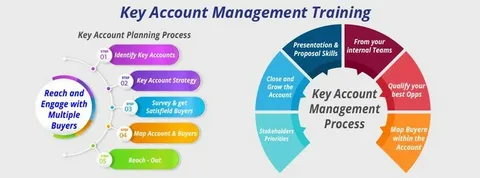In today’s competitive market, managing key client relationships goes far beyond sending check-in emails or updating spreadsheets. Businesses rely on key account management (KAM) software to track interactions, understand client needs, and uncover opportunities for growth. The right software doesn’t just organize your data—it shapes how your team collaborates, anticipates client needs, and builds long-term trust.
Yet, not all KAM tools are created equal. Some are designed for small teams with simple workflows, while others cater to global enterprises with complex structures. Choosing the right one means understanding your business goals first and then finding a system that supports them—not the other way around. The wrong software can create more problems than it solves, but the right one can redefine how you manage relationships altogether.
Matching Software Features to Your Strategy
A common mistake businesses make is choosing software based on popularity rather than purpose. It’s easy to get swayed by flashy dashboards or long feature lists, but the real question is: does it fit your strategy? If your goal is to deepen client engagement, for instance, you’ll want tools that help you track relationship milestones and measure satisfaction levels. If you’re aiming to grow revenue from existing accounts, data analytics and forecasting tools will matter more.
A strong KAM platform aligns with your team’s daily challenges. It should make collaboration seamless, not complicated. The ideal system centralizes information—so your sales, marketing, and support teams all have access to the same client data. It should also help visualize account health at a glance, showing potential risks or opportunities before they turn into surprises. Software, like those provided by Valkre, for example, focuses on strategic account planning and insight-driven management, helping teams make better, faster decisions without losing the human touch that relationships require.
Considering Integration and Ease of Use
Even the best key account management software can fall flat if your team struggles to use it. Integration and usability are two factors that can make or break adoption. If the tool doesn’t connect smoothly with your existing systems—like your CRM, email platform, or analytics dashboard—you’ll end up duplicating work or losing valuable context.
Ease of use also plays a huge role in whether your team will actually embrace the software. A complicated interface can lead to frustration and resistance, while an intuitive one encourages consistent use. Think about how your team works now: do they rely heavily on mobile access? Do they need collaboration features for remote work? Software that fits naturally into your workflow is more likely to stick and deliver results. The goal isn’t just to implement a tool—it’s to make it a natural part of how your team operates every day.
Balancing Customization and Simplicity
When choosing a KAM solution, businesses often face a balancing act between customization and simplicity. Highly customizable platforms can adapt to your exact processes, but too much flexibility can overwhelm users or slow implementation. On the other hand, simpler tools may get you started quickly but could lack the depth needed for complex accounts.
The best choice depends on your organization’s maturity. If you’re building your KAM function from the ground up, simplicity might serve you best—something easy to roll out and train on. But if your company manages global accounts or detailed client strategies, customization will be worth the extra effort. Look for software that grows with you: one that allows you to add features, dashboards, or integrations as your business scales. The right tool should evolve with your clients, not become obsolete after a few years.
Evaluating Support and Long-Term Value
Software selection isn’t just a one-time decision—it’s an ongoing partnership. A great KAM platform is backed by responsive support, regular updates, and a team that listens to user feedback. Too often, businesses invest in systems that look promising during demos but fall short when challenges arise. Before committing, ask about onboarding support, training options, and how often the company updates its software to meet new business needs.
Think long-term, too. The best platforms don’t just store data—they help you grow with it. Over time, the system should deliver insights that refine your strategy and strengthen client loyalty. Instead of thinking of KAM software as an expense, view it as an investment in your company’s relationships—the ones that keep your business thriving.
Building a Better Future with the Right Tools
Choosing the right key account management software isn’t about keeping up with trends—it’s about giving your team the tools to build stronger, smarter client relationships. The ideal platform should simplify workflows, make collaboration natural, and provide insights that turn data into action. When your software aligns with your goals, your team can stop chasing information and start focusing on what really matters: understanding clients, solving their problems, and growing together.
In the end, technology doesn’t replace the human side of account management—it amplifies it. With the right KAM software in place, your business can move from managing accounts reactively to leading relationships proactively. And that’s where the real competitive edge begins.


